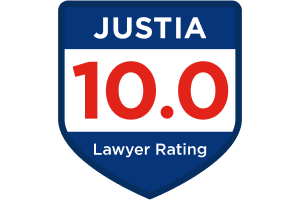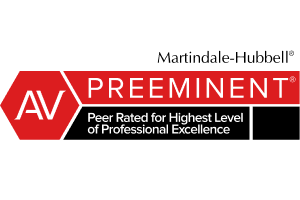Ten Steps For Assessing Cases
“Trials make your blood flow, settlements make your cash flow.”
IRA H. LEESFIELD
Leesfield & Partners
2350 SOUTH DIXIE HIGHWAY
MIAMI, FL 33133
305/854-4900
The economic success of your firm depends upon the criteria and analysis employed in the evaluation of new business. The decision to accept a case and invest significant resources in both time and money is always a threshold question for contingency fee lawyers, whether new or experienced. Even the most talented courtroom lawyer, can crash and burn if he or she takes the wrong cases.
Based on my involvement in over 100 trials and thousands of settlements, I would like to share what I consider the ten most important tips for deciding which cases are weak and which are worth pursuing. As I have often said, “trials make your blood flow, but settlements make your cash flow.” The foundation of this article comes from hundreds of hours of conversations with members of the plaintiffs and defense bars, as well as claims adjusters and jury consultants. Incorporating this information in your case selection should provide a road map for making better qualitative choices. There are no “iron clad” rules or guarantees to determine the outcome of any case, so please consider the following in light of your own experience, and let us know if you have avoided some grief or unnecessary costs in the upcoming years.
TOP TEN TIPS FOR VALUING A NEW CASE
1. Is the book worth the candle? – Before you invest substantial time, money and resources, evaluate your case from a full damages perspective and then working backwards from 100% liability, and available coverage. Before you “grab the tiger by the tail,” and begin spending resources on travel and depositions, as yourself: “What is this particular case really worth?” With input from colleagues, inside and outside your firm, discuss the case from the perspective of your client’s own liability, or third party liability that may reduce the verdict. For example, getting involved in a case when the statute of limitations is about to run is mostly a bad idea. Remember, time and money spent on an unproductive case is time and money taken from the better cases.
2. Use experts to evaluate your case early – Set an “evaluation” budget – decide exactly how much will you spend pre-suit to investigate the claim. This is a business decision and should not be influenced by emotions or a persistent or sympathetic client or extraneous considerations. Remember, declining a case is sometimes the best decision because the next opportunity to come along will need your full attention. Get your experts involved early. Explore pre-suit mediation. Don’t “fall in love” with your case.
3. Know the playing field – There are some jurisdictions where it is difficult to get a verdict/award in a medical negligence case. There are some judges who have their own perspective about different types of cases, and the propriety of certain awards. There are some jurisdictions where prior similar verdicts are high and others that are rock-bottom. In evaluating your case, you and your opposition will know the outcome of other similar cases by verdict or settlement. In the preparation of your settlement demand, be sure to highlight your results from the same geographic locality to show that you have favorable awards. For example, the trial of a medical negligence case in a town dominated by medical centers is a tough road. The use of jury consultants and pre-trial research will help you in your evaluation. Do not hesitate to “mock” try your case to jurors even at a very early juncture to determine the case’s value. The demographics of your trial matter and the same case will have a different value in different parts of your state. Know and learn the demographics of your potential jury.
4. What’s the coverage? – This should be one of the first questions asked when evaluating a claim and, tragically, one of the most overlooked. You may never know the true coverage until you get into the litigation. But, coverage can be determined by a number of peripheral facts that were not obvious in the initial investigation. Was the defendant driver engaged in a business cell call or texting during the accident? Did the defendant’s car go out of control because of roadside or environmental factors? Was the defendant driver distracted or impaired by a third party? Was the defendant driver taking medication? Did the design defects in your client’s vehicle enhance his/her injury? The list goes on. Do a mental or written inventory of potential defendants. The proper evaluation of insurance coverage requires a thorough understanding of every possible cause contributing to the injury. Additional coverage may not come from one defendant, but the ability to find multiple defendants who should contribute to the verdict or settlement. Often overlooked is uninsured motorist coverage or coverage provided by rental car contract or other first party benefits. Creatively finding coverage can separate you from counsel who hastily overlook opportunities.
5. Evaluate the quality of the client. Client appeal and acceptability, their story, and facts surrounding events of the relevant incident, will often tilt the scales in your favor. Probably, the biggest mistake made by counsel on all sides of the table is to mis-evaluate the client’s impact as a witness. In pre-mediation days, the claims adjuster never had the opportunity to meet the client (or for that matter, plaintiff’s counsel.) They evaluated cases based upon the oftentimes biased and jaundiced reports from defense counsel who were not motivated to settle for a variety of reasons. Along came mediation and the opportunity for representatives of insurance carriers to “eyeball” the client and the client’s family, as well as the preparation and capability of plaintiff’s counsel.
If you have client presentability problems, a difficult or tainted client background, do not hesitate to introduce the client’s family, close friends, employers or other supporting witnesses at mediation, and for sure, at trial. Most surprising verdicts result from the defendant’s failure to grasp the “tipping point” of the client’s appearance and testimony at trial. The same is true for mediation. The real surprise comes when the client gives a poor deposition and impressive testimony at trial. Sometimes, a poor deposition may not be so bad, but it is reported as such by defense counsel. Whether it is trial or settlement, the impact of your client’s demeanor is a key evaluating decision.
What to do with a “checkered client history.” – Oftentimes, your clients have “cleaned up their act,” i.e. arrest record, multiple claims, domestic problems, etc. Your client’s “new” life can influence your evaluation of the case, as well as the defendants. Make every effort to find “before and after witnesses,” that are outstanding members of the community who can testify, whether by deposition, video or at trial, about the way your client has turned his/her life around. Sometimes, the very fact that the client has made a positive changes will grab the attention of those evaluating the settlement and/or the jury. People (and it includes claims managers) are impressed by turnarounds. So, first of all, find out about any background problems, and then attack them head on. Do not try to finesse, deny or avoid these situations. Rather, present the witness and new behavior pattern and use that to your advantage.
6. Find the “skeletons” in the defendant’s closet – Corporations make all kinds of outlandish claims and decisions, trying to cover up past litigation, and/or totally ignore the history of their product and its “behavior.” The corporate world battles between the sales division and engineering/production division. The sales world overstates the product, its safety and usage. Dig deep and find the prior and repetitive claims, injuries, complaint and filed cases. Do your research. Government investigations may already surround your particular defendant. You may find valuable information by accessing FOIA requests (Freedom of Information Act.) During discovery, or more important, in your informal discovery on the Internet or other research, catching the defendant in an outright lie or deception will boost the value of your case. Do not hesitate to call upon your colleagues and friends in the trial bar, to get the information that helps provide a complete picture of the defendant.
7. Who is the defense counsel? – From the early stage of your case, especially those sent by other firms that are already in litigation, ask “who is the defense counsel and who is the insurance carrier?” Is the defendant self-insured? Sometimes you will have a good idea as to who will pick up the defense based upon the practice area, i.e. trucking cases, bad faith, a hospital/medical center. The good news is that over many years of dealing with the same counsel and their claims managers, you may be able to approach them early on. The bad news is that there are numerous defense counsel that always present the case as totally defensible and winnable until the long, arduous, and painful process of discovery proves otherwise. Plaintiff’s counsel should always show they are prepared to litigate through trial when they take the case. However, it is no secret that if your client’s rights can be protected short of expensive, time consuming discovery, the economics can work out better for the client. If you draw a “stone walling, scorched earth” defendant, get muscular in a hurry. Set your course early on. Be prepared to request help from the court by way of a special master or mediator before litigation gets out of control. Understand defense counsel’s history with other counsel in the community. Has defense counsel been sanctioned or otherwise recognized by the courts as obstructive? Your evaluation of the case should not hinge on difficult defense counsel, and at all junctures, you must convey your determination to see matters through to the end with vigor and the highest of professionalism.
8. Take a sneak peek – There is no reason to wait until mediation or trial to evaluate your client’s case. Inexpensive and helpful focus groups and mock juries can provide insight into your case evaluation on the issues of liability and damages. Even an informal discussion with objective colleagues can help. Always try to objectively determine the weaknesses and strengths of your case, pre-mediation and pre-trial. Do not engage in self-deception, believing that defendants will not find the “bad stuff” on your client. At mediation, the evaluation of your case can increase if you bring in evidence in a highly developed way that lets the defendants know you are prepared for trial. Utilize visual and advanced technology and always deal from a position of strength and candor, confessing your vulnerability and re-enforcing on your strengths. Your presentation and demeanor can be buttressed at mediation by bringing the key expert to explain the life changing results of your client’s injury. Find the right witness to narrate the “video” you have prepared.
9. Be trial ready. The best way to evaluate your case is to complete reasonable discovery, or if in pre-suit, learn all of the pertinent facts, good and bad, needed to get a full picture. Formal discovery is not always required, especially if you have access to experts and you can obtain all the medical information to make a reasonable evaluation of your client’s injury. Trial readiness can be conveyed to the defendants based upon your prior track record with them in the practice area you are now litigating or in other practice areas. Politely remind the claims manager or lawyer of the last verdict or result you had in common. When your case is trial ready, regardless of the juncture, the true value of the case can be better assessed. Oftentimes, there are “hidden factors” that will affect the defendant’s willingness to settle and the settlement posture. Go on line! Find out the defendant’s financial picture. Are they making money? Are they merging? Are they selling? Are they going public? What is the corporate picture of the particular defendant or insured? Knowledge is power and the more you know about the defendant, the better your client’s chances are to get a full and better result.
10. May it please the Court? – Sometimes, your client and his/her case do not come together until you have begun your trial or have moved well into it. If the case has been mediated, the claims manager has already met your client and you. However, they have not heard all of the evidence and perhaps not seen the quality of your lay and expert witnesses. They may have a written economic evaluation, but they cannot see the jury nodding as the economist is testifying. (Also, if the jurors are shaking their heads, you may want to take note of that.) The quality of your experts can shine at trial or the contrary. Of course, everyone gets to see the jury and their reaction. If the trial brings your client life altering financial security, the lawyer’s needs have to be secondary to the best interest of the client, no matter what you feel the verdict may be. Settlement during trial is a challenging and difficult decision, and should always be made in consultation with the client’s needs and best interests.
CONCLUSION
Case evaluation is neither quick nor easy. Be willing to seek input from friends, colleagues and other respected professionals. Network. Be inclusive. Develop a flexible method that suits your office, and stick to it. I hope this article has provided a framework for evaluating your cases that will help you avoid pitfalls during every phase of litigation. Remember, successful principles of productive and intelligent case evaluation applies to both settlement results and verdicts.







